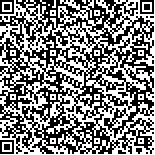下载中心
优秀审稿专家
优秀论文
相关链接
摘要

为解决高分辨率遥感影像分割中,由光谱测度的空间复杂性、相同类型地物目标异质性增大带来的类属不确定性以及分割决策不确定性等引起的分割精度下降问题,提出一种融入空间关系的区间二型模糊模型高分辨率遥感影像监督分割方法。(1)建立高斯函数模型作为一型模糊模型,用来刻画像素类属的不确定性;(2)模糊化一型模糊模型中的均值或标准差,建立区间二型模糊模型,以强化类属的不确定表达和增加分割决策信息;(3)综合一型模糊模型及区间二型模糊模型的上、下隶属函数建模模糊决策模型;(4)融入邻域像素关系,使用待分像素及其邻域像素在模糊决策模型中的隶属度共同决定像素的类属。采用本文算法分别对真实高分辨遥感影像及合成影像进行分割,并对测试结果进行定性和定量分析。结果表明,本文算法可以得到更高的分割精度。
Image segmentation is a significant step in image processing. High-resolution remote sensing images can clearly characterize landscape information and eliminate the membership uncertainty caused by mixed pixels. It has considerable advantages and potential in precise segmentation. Nonetheless, the spatial complexity caused by spectral measurement and the enhanced differences among pixels in the same object may reduce segmentation result accuracy. Thus, this study establishes an interval type-2 fuzzy model for detected images. Interval type-2 fuzzy theory considers the main and the secondary membership functions; the latter is represented by the label "membership 1" to express the uncertainty of pixel membership and of a segmentation decision. The aforementioned problem is solved effectively with the proposed method. The drop type problem in type-2 fuzzy theory is another focus of research in this field; a fuzzy decision model is established by reducing the type-2 fuzzy model to a type-1 model. The fuzzy decision model directly influences segmentation accuracy, and recent studies are all based on the upper and lower membership functions. These models can improve decision quality to some extent; however, they do not consider the main membership function. This neglect may significantly influence decision results, particularly when the influence of neighborhood pixels cannot be incorporated into the supervised image segmentation algorithm. To overcome these shortcomings, we proposed high-resolution remote sensing image segmentation by introducing a spatial relationship into the interval type-2 fuzzy model. The proposed algorithm considers the influences of the upper, lower, and the main membership functions in establishing the fuzzy decision model.First, a type-1 fuzzy model is built with the Gauss function to characterize the uncertainty of pixel membership. Then, we extend the mean and variance of this model to construct the type-2 fuzzy model, which improves the expression of the membership function in the type-1 fuzzy model and serves as the knowledge basis to enhance segmentation decision accuracy. A segmentation decision model is then established based on the information derived from the upper, lower, and main membership functions of the trained data. Finally, the membership of a pixel is decided by the membership functions of both the pixel itself and its neighbors to optimize the segmentation of high-resolution remote sensing images.We compare this method with maximum likelihood segmentation and an interval type-2 fuzzy model segmentation without a spatial relationship via high-resolution real images. Qualitative and quantitative analysis findings indicate that the method applied in this study generates high segmentation accuracy.This study proposes a supervised image segmentation method based on an interval type-2 fuzzy model with a spatial relationship. This method improves the uncertainty expression of pixel membership, solves the problems caused by complicated spatial relevance, and enhances the accuracy of the segmentation strategy. Furthermore, the experiments show that this method is effective and feasible. In the future, the Gauss mixture model will be used as a type-1 fuzzy model to potentially improve the accurate characterization of landscape features.

